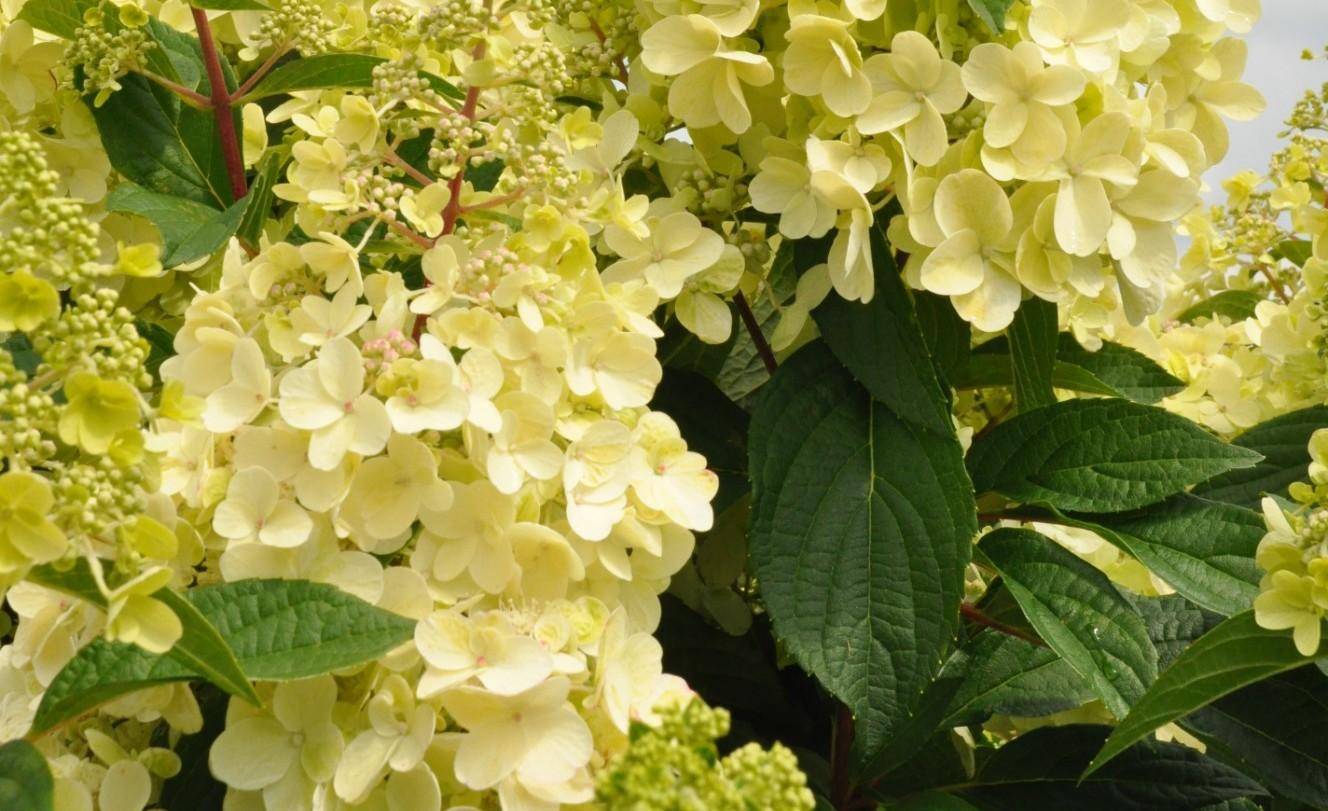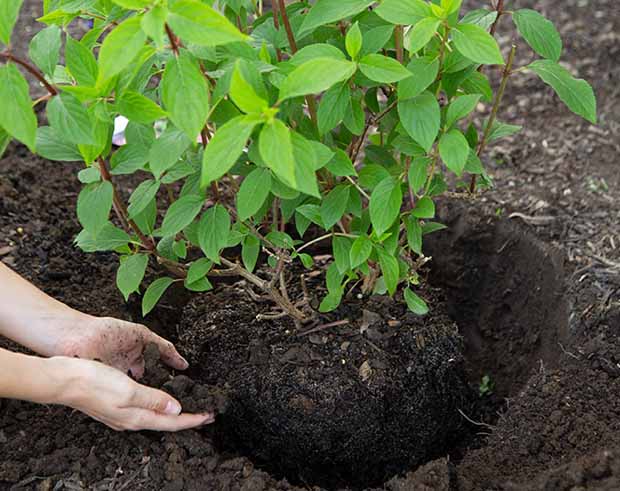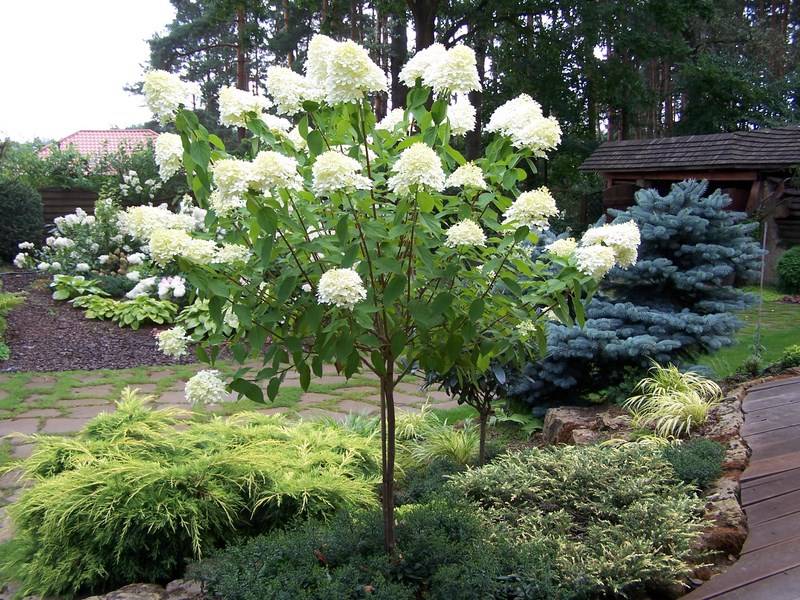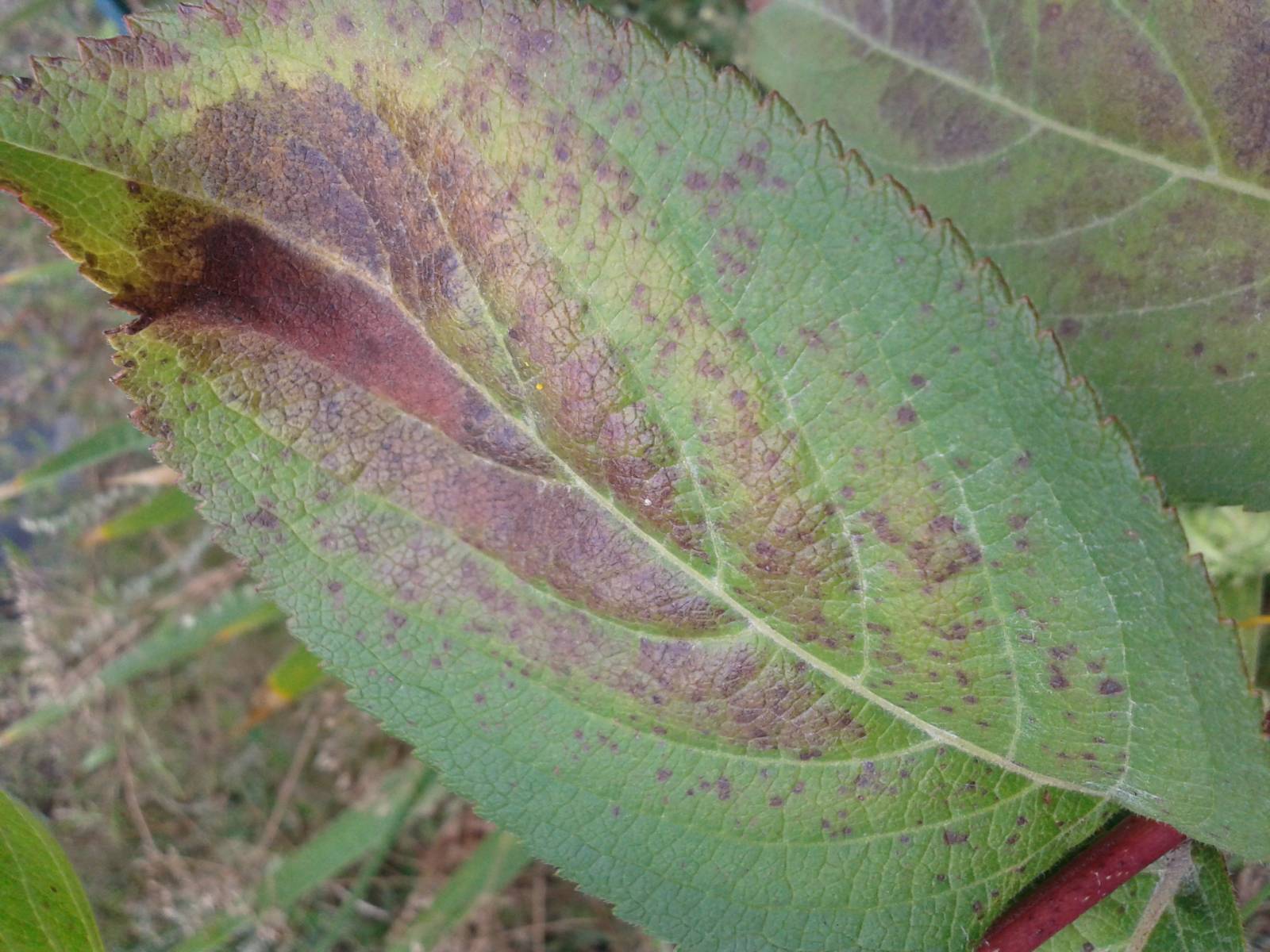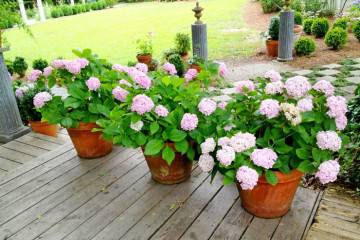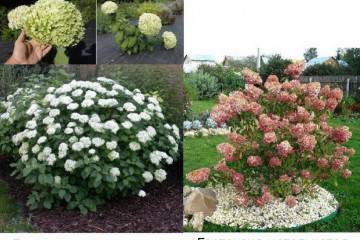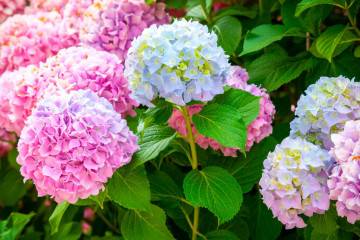Hydrangea paniculata Candlelight - description
Content:
There are 80 species in the Hortensiev family. The homeland of the plant is South and East Asia. A variety of varieties is observed in China and Japan. In Russia, the panicle hydrangea Candlllight is widespread. A beautiful flower grows without much effort by gardeners.
Hydrangea paniculata Candlelight - what kind, what does it look like
"Hydrangea" in translation from Latin means "a vessel with water". It follows from this that the culture is moisture-loving. "Candlelight" for the British - "the light of a burning candle." The pyramidal flowers do indeed look like candles with a distinctive creamy golden hue. The variety was bred by Dutch scientists. At the Plantarium exhibition in 2013, the flower received a silver medal.
Description of hydrangea Candelite:
- The bush is tall, spreading, reaching a height of 1.5 m. Even without pruning, it has a regular rounded shape, a dense crown.
- The branches are strong, resilient. In the upper part, the bark is colored burgundy with a slight purple tint. Under the weight of the flowers, the shoots bend and droop, so gardeners take care of the stands, supports.
- Leaves are petiolate, oblong, large. Carved along the edges with graceful teeth. The surface of the leaf plate is dark green, dotted with textured veins. The tip of the leaf is pointed.
- The flowers look like a panicle, hence the name. Gathered in groups. They consist of two types: fertile ones are located in the middle of the inflorescence and bear fruit, sterile - sterile flowers at the edges of the inflorescence. The size of the panicle is 30-35 cm. The color of the petals turns from cream to yellow to bright red by autumn.
Garden culture blooms from mid-July to October. Inflorescences are formed on the stems of the current year. The Candelite hydrangea blooms in the first year of planting.
Landing in open ground
A properly planted deciduous shrub has lived in one place for decades. There is the Kendl Light hydrangea, a long-liver with a half-century history.
Site and soil selection
The culture can grow in open sunny areas, but then the flowers become smaller. Places with partial shade are preferable. But it should be borne in mind that in the constant wind and draft, the plant suffers, it is difficult to develop. Neighborhood with fruit trees is not desirable: the roots of the two crops will begin to intertwine, fight for nutrients.
The hydrangea loves the soil loose, fertile, with a low alkaline index. If there is clay soil on the site, the structure is corrected with ash and sand. Loam is ideal. On sandstones, where moisture does not linger, the Candlelight hydrangea does not please with a long lush flowering. Lowlands with stagnant water are absolutely not suitable for a flower.
Planting time, selection of seedlings
The plant is planted in open ground in the fall, a month before frost. In the Central zone and northern latitudes of Russia, frosts begin in September. Therefore, the Candy Light hydrangea is planted at the end of August. Before frost, the plant takes root.
In the first year after planting, the seedling is covered. In the future, an adult plant does not need shelter even at -30 degrees. If part of the root freezes out, it's okay. In the sun, the bush will move away and start growing. Hydrangea Candleit is a frost-resistant variety, which is famous for it in the gardens and parks of Siberia, the Urals, the Far East.
It is permissible to plant a crop in late spring. For this, seedlings are taken with a closed root system, in containers. It is convenient for transportation. You can choose planting material in advance, hold it at home until planting.
The aboveground part will tell you about the health of the plant. A good seedling should have 2-3 shoots growing symmetrically to the main stem. If the roots are closed, it is still worth checking. The earthen lump is carefully pulled out of the container, inspected. Traces of rot and fungus are a reason to reject a seedling. The roots look healthy, the earthen lump is evenly moist - such material can be taken.
The condition of seedlings with exposed roots is easier to assess. But it is worth planting them immediately or holding them for a day or two in a cool place, wrapped in a wet rag.
Planting procedure step by step
In order for the culture to take root better, open roots are soaked for 2 hours in water with root growth stimulants before planting. These are "Zircon", "Kornevin", "Heteroauxin". It is not necessary to prune the roots. If 2-3 plants are planted, then the distance between the shrubs should be 2 m.
Further steps:
- Dig a hole 30x40 cm.
- A drainage layer of broken brick, stones, expanded clay is laid on the bottom.
- The dug soil is mixed with fertilizers, ash, sand.
- Part of the earth is poured into the pit.
- In the center, place the Candlelight panicle hydrangea, straighten the main and adventitious roots.
- Fall asleep with the rest of the soil mixture.
- They tamp, make sure that the root collar is deepened by 4-5 cm.
- Watered with settled water, mulch the soil under the bush.
In the spring, the plant is planted in the evening. If the weather is hot on the following days, they shade for 10-14 days. Once after planting, agronomists recommend watering a young bush with slurry. A small amount of manure is taken, diluted in water until a slightly greenish solution is obtained, and poured under the root.
If the roots were sold in a container, the flower is planted by the transshipment method - they do not shake the earthen lump, the roots are not pruned.
Young plant care
Further care is standard for dwarf shrubs. The main thing is to ensure normal growth immediately after planting. Hydrangea does not grow on its own, it needs care.
Watering and feeding
The "water jar" requires replenishment of liquid. Therefore, the bush is watered abundantly as the soil dries. It is not worth pouring over. This is the rule for shrubs. Constant moisture will lead to root rot, fungal diseases. After moistening, the soil is loosened to give oxygen access to the plant roots, and the weeds are removed.
Candlelight hydrangea is a fast growing crop. But without top dressing, lush flowering cannot be achieved. Therefore, in spring, the first "shake-up" of plants is done with organic fertilizer - mullein, diluted in water. Not fermented manure is used with caution, 50-70 g per bucket is diluted.
To build up the aboveground part, nitrogenous compounds are used. At the time of bud formation and flowering, 40 g of potassium sulfate and 70-80 g of superphosphate are diluted in 10 liters of water. The solution is enough for 1 sq. square meter. Stand between dressings for 1 month. After flowering, in the fall, compost is distributed over the site.
Pruning, pest control
Pruning stimulates the growth of new shoots, bud and bud formation. Held in the fall. Old and diseased branches are cut out completely. The rest is trimmed.
The plant is rarely attacked by pests. Slugs are a threat. They are found by holes in the leaves and silvery stripes on the trunks and the green part of the flower.
There are two ways to fight:
- Pour beer under the bush. Slugs, attracted by the smell, slide from the bush to the ground and die.
- Eggshells are scattered around the perimeter of the bush. Pests will not be able to overcome such a barrier.
Powdery mildew, white and gray rot can be treated with fungicides. Leaf aphids and spider mites are afraid of the preparations "Akarin", "Zubr", "Tiofos".
Breeding varieties
In the second year of life, the Candleite panicle hydrangea is ready to revive the generation of the genus.
Breeding methods:
- By dividing the bush. In the spring, the bush is dug up, the root system is divided so that roots and stems remain on the divide. Transplanted directly into the prepared wells.
- Cuttings. One-year-old basal shoots are cut. For rooting, they are placed in a mixture of sand and peat. The cuttings are kept at an air temperature of +20 degrees and watered regularly. When the roots appear, after about 1.5 months, they are transplanted into a pot or soil.
- Layers. Young shoots are bent to the ground, placed in a groove, the branch is covered so that only its tip sticks out. The next year, the stem is cut off from the mother bush, the layering is dug up, transplanted to a new place.
The inflorescences of the culture bear fruit. Seeds ripen in them over the summer. Florists do not practice the seed propagation method. It is not rational at home - it is long and laborious.
Hydrangea Candlelight is an attractive flower with great decorative potential. A shrub plant is a real decoration of the garden. Achieve beauty with constant care. First, you need to choose the right place for the flower, and then regularly water, fertilize, and loosen the soil.
